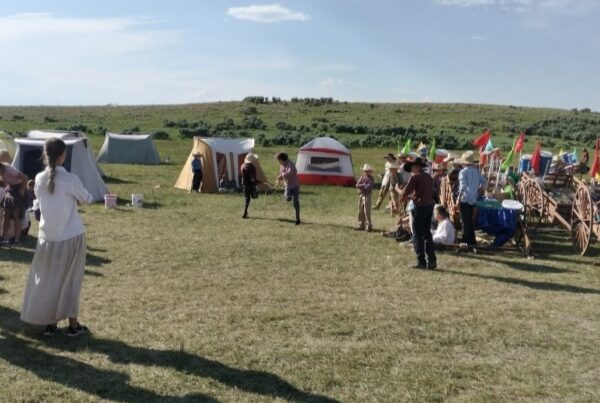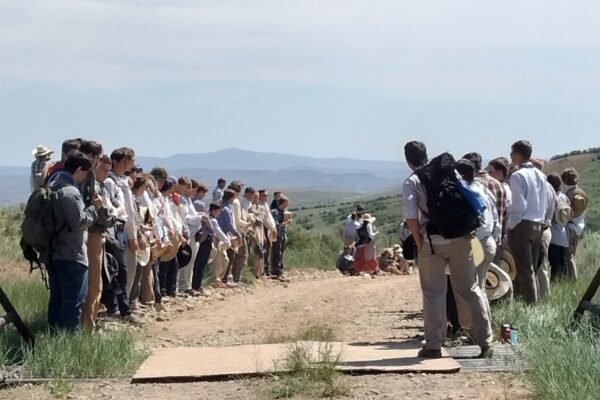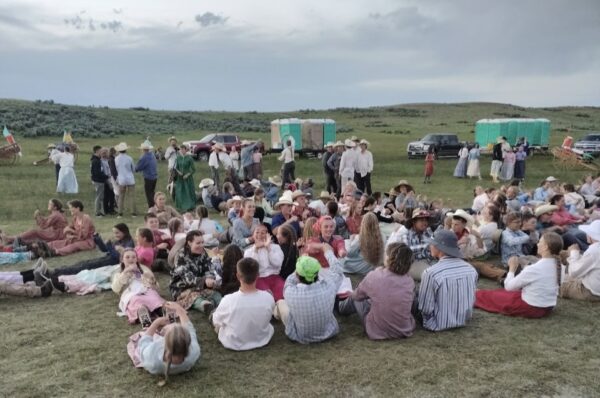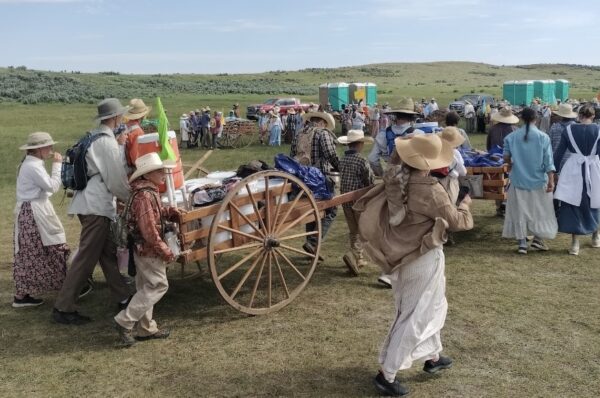The Church of Jesus Christ of Latter-day Saints gives their youth the opportunity to take a step back in time and get some appreciation for their pioneer ancestors. The church does this through an activity called “trek,” where the 12- to 18-year-old members, plus some adult leaders, go to an area owned by the church and pull carts for a certain amount of miles per day. From July 5 to July 8, the Panguitch Stake went on trek.
Trek is a great way to escape the social media world and get to know all the kids in the stake better. Kids throughout the stake are separated into groups of 8-10. These groups are these “families” for the week. The Panguitch Stake decided to give the older kids in their stake the chance to take the lead and become what were called the “big sister and brother” of the family. This responsibility meant that the big sister and brother would watch and take care of the other kids in their group.
The adults that went on trek would either be a mentor couple, company captains, on the medical crew, cooking crew or support crew. The adults were there to be support and make sure everyone was healthy, but they were to not help pull the carts. This was so the kids could get a full experience.
Games, Minus the Electronics
No electronics were permitted, so entertainment was to be found within interactions with the people. One game that everyone loved was cowboy jousting. Instead of using a stick to try and throw someone off their horse, players would try to throw lassos at the feet of their opponent. Whoever caught their opponent won. Another game was the stick tournament. Two kids would hold onto a stick while sitting on the ground. The goal was to try and pull the stick and your opponent towards you. If one person let go of the stick or was pulled over, they lost.

The trekkers would walk 4-7 miles every day, with lunch breaks in between, of course. While pulling handcarts the kids sang songs and talked with their families.
The Women’s Pull
On the second day of the trek, a very spiritual and respectful event started: the Women’s Pull. The Women’s Pull was 1.3 miles. All the boys started first that day with the majority of the handcarts, leaving only a few behind for the girls. The girls would walk the little over a mile without help from any men and boys. The Women’s Pull was difficult, but after the girls came over the top of the last hill, they were welcomed by all the men and boys down on one knee, kneeling in respect, as the girls just did a very hard task. The Women’s Pull is all about showing the girls that they can do hard things, even if it’s on their own. Finding their inner strength, they accomplished the task at hand.

Every night the crew would end at their designated campsite and set up for the evening. In the morning everything would have to be packed up. Tents, the toilets, cooking crew and sleeping items would be packed into trailers for the support crew to be taken to a new campsite.
Dancing to the Finish in the Hoedown
On the last night of the trek, a dance called the “hoedown” commenced. A professional “hoedown” dancer came and taught the kids different country styles of dancing such as line, barn and square dancing. All who participated got to interact with new people and have the opportunity to make new friends.

While trek is hard, and most did not want to go, it is a great opportunity to grow closer to God. The kids also got to escape the rains of social media and enjoy the present with kids their age. The “families” or friends that were made on trek will hopefully last forever as will the memories that were made.
– by Ari Hurdsman (18) Junction
Feature image caption: The Green Company on the Panguitch trek starts to head off onto the trail for the day. Courtesy Dan Springer.

Ari Hurdsman – Junction
Ari Hurdsman is a junior journalist at the Byway. She just recently moved to Ephraim, Utah, where she is a freshman at Snow College. She enjoys writing about Piute sports, and she’s really good at it! In her free time, she enjoys singing, dancing, reading and hanging out with friends and family.

